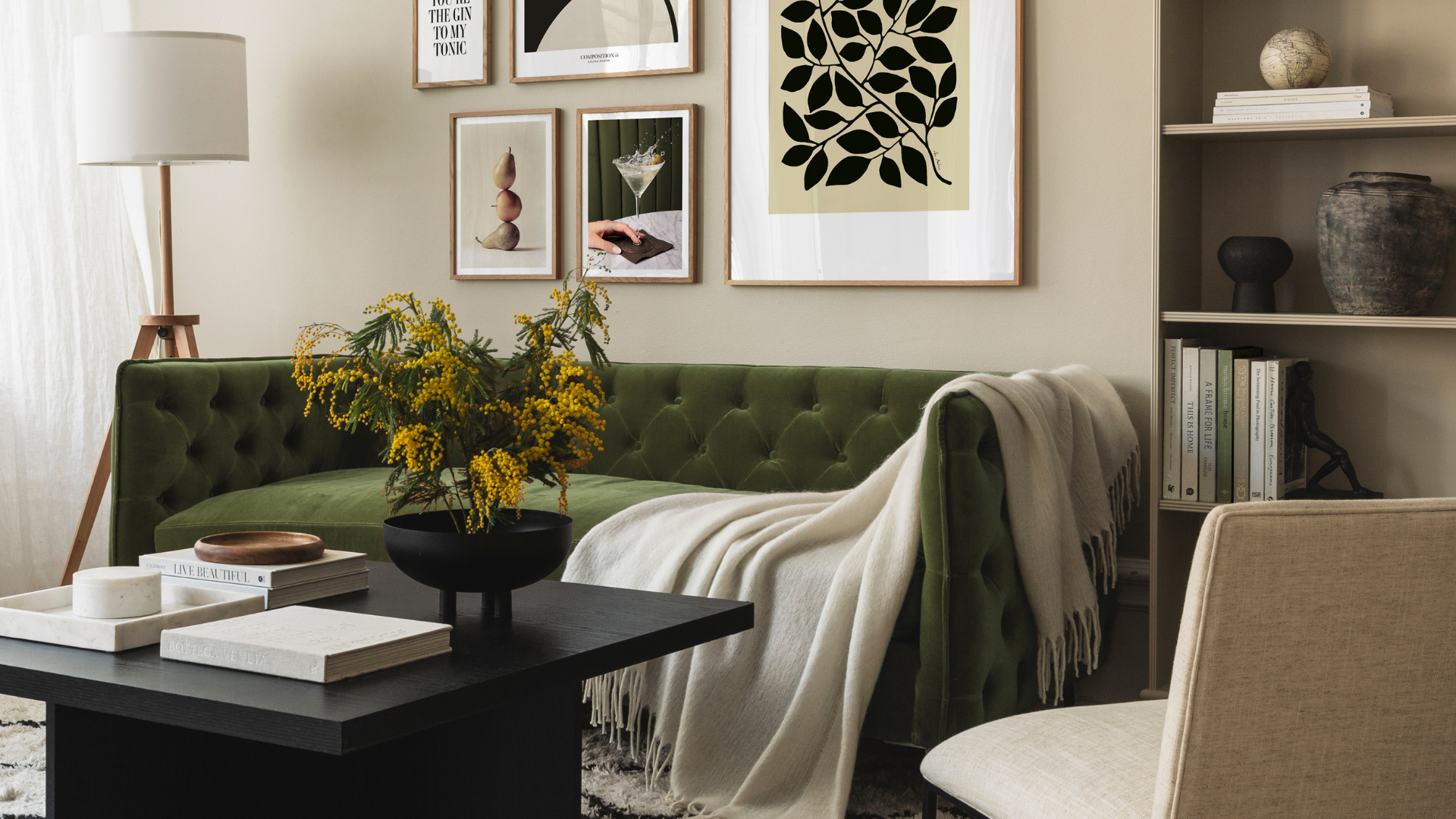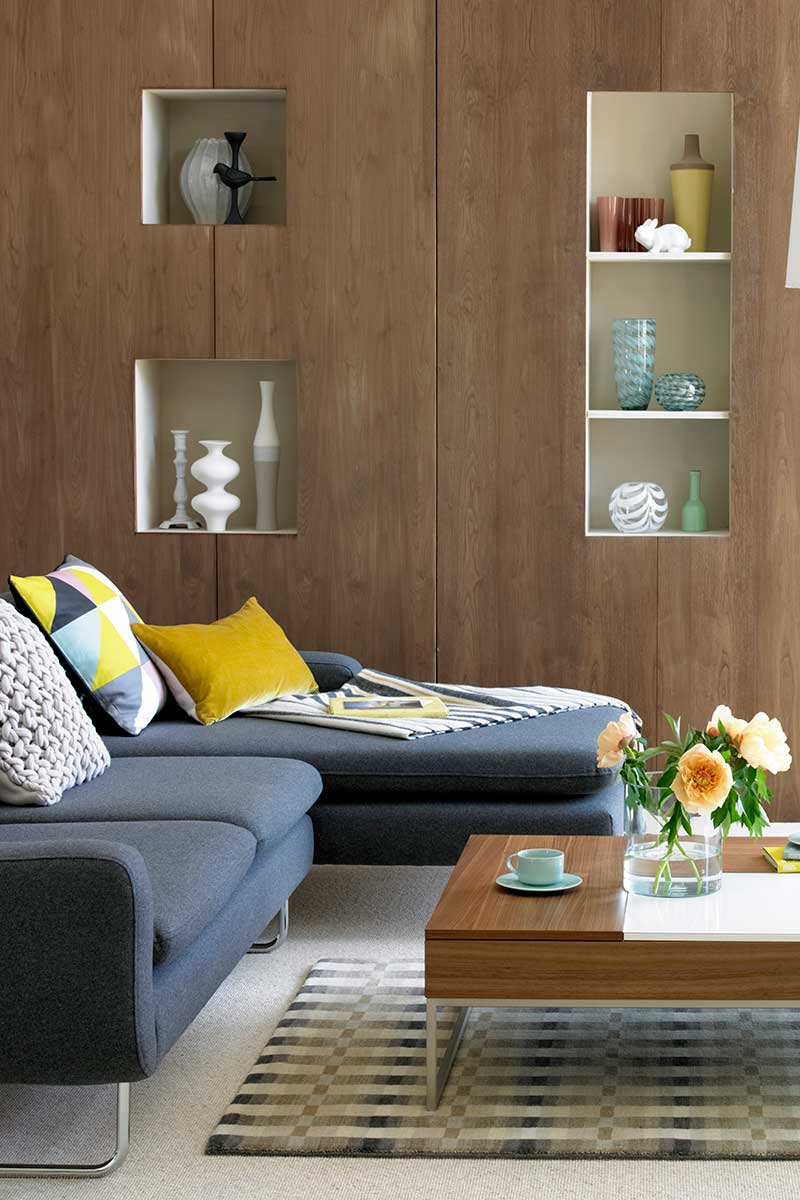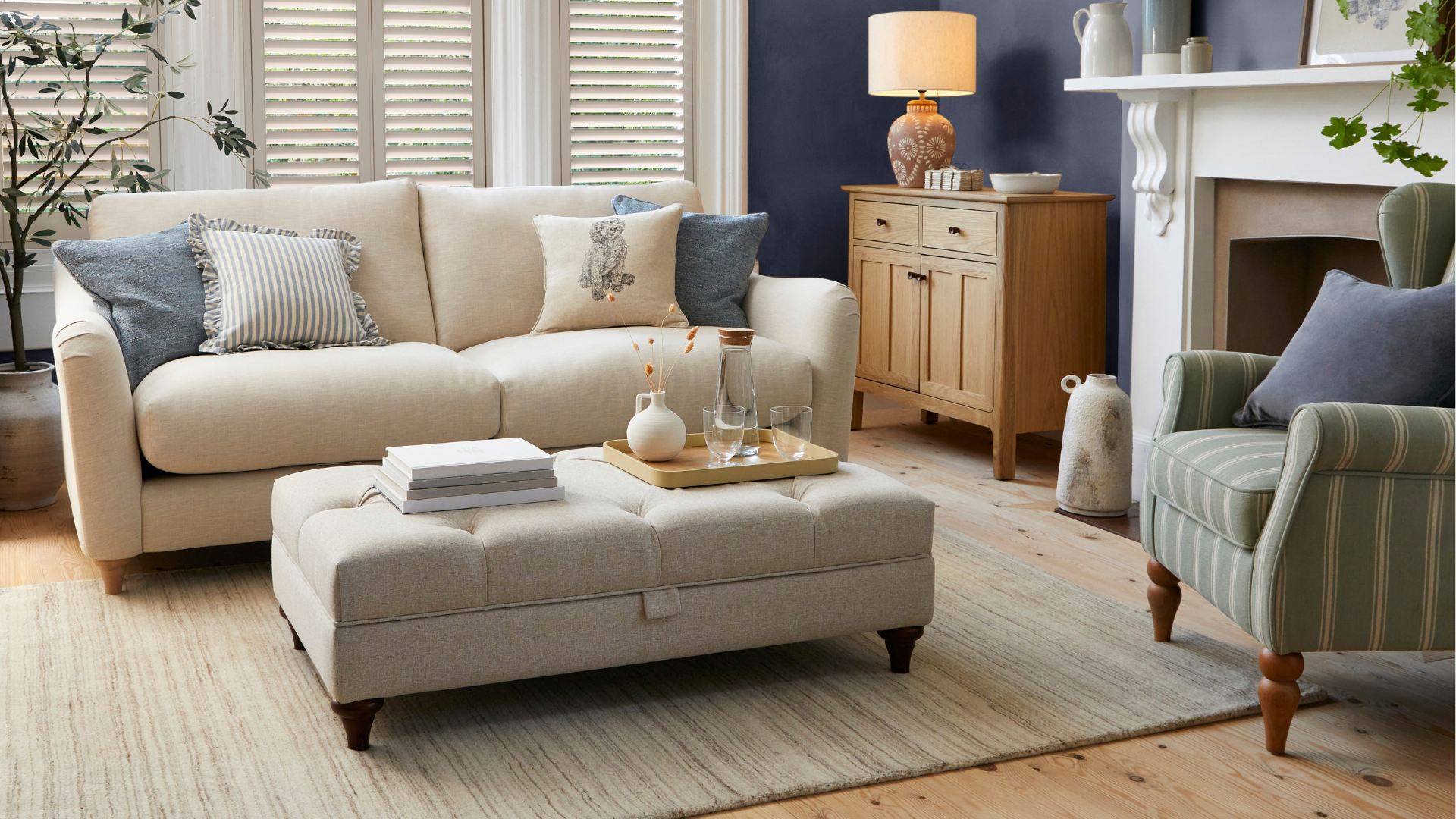
Our living rooms should be a relaxing sanctuary, a place to unwind at the end of the day, not a space filled with anxiety-inducing clutter.
However, as it's often the last room we settle in it's no surprise that we sometimes hit a wall when it comes to keeping this multifunctional space looking warm and welcoming 24/7.
Reassessing what you have, decluttering your home, and rearranging things can transform your space from bland to beautiful, and the best way to make it stick is to take note of the professional decluttering methods that the experts use themselves.
How to declutter a living room: 5 rules professionals use
"Don't let the primary room for people gathering and relaxing in inadvertently become a zone for belongings to gather and get too comfortable in too," warns professional home organiser Katherine Blackler.
Below are the key living room decluttering rules you need to transform a living room on a budget and create a room you can switch off in, even if only for half an hour.
1. Keep decor intentional

Those in favour of maximalist decor might disagree, but quality over quantity is generally best when it comes to decor items. Thoughtful curation of objects makes a living room look expensive and creates a calmer atmosphere, so go for a mindful display rather than keeping lots of small trinkets out on show.
However, this is easier said than done because we get so used to how our living room looks – the nice bits and the problem areas – that we become blind to the clutter.
One good way to identify clutter is to view the space as a visitor – imagine you are walking into the room for the first time and see what catches your eye. "Visual clutter can have a huge impact on the feel of a room so limiting the number of decorative items that you have on display can help to create a light and airy feel," comments professional home organiser Lisa Coe. keep in mind also that removing clutter is the easiest way to make a small living room look bigger.
Suzanne Roynon, interiors therapist and Feng Shui expert says, "I still see shelves of DVDs and CDs in homes where they don’t have a player or drive for them. If you no longer have the capacity to view or listen, then it’s time to free up the storage space and pass the semi-obsolete discs on for recycling or reuse elsewhere."
2. Give everything a 'home'

Professional organisers say that the key to making your living room a haven of relaxation is to have a place for everything, which might mean you have to take a step back and free up some space first.
"My top tip for keeping a living room clutter-free is ensuring that you have clear systems in place and a designated home for everything," begins Lisa Coe. "Rather than fighting against the clutter, take the time to establish which items are always gathering on your living room surfaces and then create a clear home for them."
For example, a faux leather tray, at Amazon can keep remote controls in one place while blending in with your existing decor. Alternatively this desk organiser, also at Amazon rotates and has compartments for Kindles, remotes, and so on.
Craig Hoareau, APDO member and managing director of A Tidy Mind London agrees that every item must have a home: "This makes it easier to put things away and prevents clutter building-up."
3. Do a daily 5-minute declutter

Small, regular bursts of tidying are always so much easier than a big sort-out. "To avoid clutter, get into the habit of frequently putting everything back in its designated place, including anything that doesn’t belong in the living room. I always like to do this each day before I sit down to relax for the evening," Lisa Coe shares.
In addition to the daily habits to keep your home clean and tidy, Lisa stresses the importance of taking stock now and then. "As there are always new items coming into the home, it’s also important to regularly have a sort out and to identify any items that are no longer needed."
Suzanne Roynon agrees: "Stay on top of it. When you notice something has become clutter, deal with it. Clutter is almost magnetic, one item of clutter soon attracts a lot more, and then it takes a lot longer to sort everything out."
4. Keep surfaces clear

I always find that it's the flat surfaces in my small living room that attract clutter the most, making living room cleaning and dusting more awkward. But when you have fewer objects for the eye to rest on, it can actually make a small room look bigger.
Obviously, we need some space for decor, be it a vase of flowers or a stack of our favourite coffee table books. But it's all too easy to dump random items on the coffee table, window sill or side table rather than dealing with them straight away. This looks messy and can make the space feel more cramped: "Keeping your window sills clear will avoid blocking the light coming into the room and makes the space feel airy," adds Lisa Coe.
"If it’s a shared living room or diner, keep the tabletop clear and use it for meals. Don’t let it become the place everything gets stacked on," says Suzanne Roynon.
If surfaces are constantly cluttered, a slimline cabinet could be a great solution, such as this Scandi-style storage cabinet, at John Lewis – as well as hiding day-to-day objects behind closed doors, it gives you somewhere to rest a small lamp or print.
5. Choose furniture with built in storage

Multi-use furniture is key to organising small spaces – people with the tidiest living rooms always make use of smart furniture with plenty of hidden storage, which makes hiding items easy.
Kate Ibbotson, APDO member and founder of A Tidy Mind says, "Look for furniture with built-in storage such as coffee tables with drawers and ottoman footstools."
A midcentury sideboard is ideal for stowing blankets, magazines, games, drinks and so on and makes it so much easier when you're quickly tidying before guests come over. Open shelving looks great, but it needs careful attention, otherwise it becomes cluttered and mismatched. For specific tips, you can read our guide to organising bookshelves.
Suzanne Roynon recommends seeking out deep drawer units: "They can hide a multitude of paperwork, printers, games and cuddling blankets so they don’t need to be visible 24/7," she says. Closed storage is your friend, be it a TV unit with drawers or a console table with smaller containers inside for stowing cables and other electronics.
What is the golden rule of decluttering?
Lisa Coe's golden rule for decluttering is to declutter and organise by category. For example, if you are organising your make-up, she says this may be stored in multiple locations across the house, making it hard to know exactly what you have. Gathering it all together makes it simple to see what you have and the volume of items you have.
"This makes it easy to identify any duplicates and enables you to make informed decisions about what to keep. When it comes to organising, working by category and storing like with like makes it easy to find things, saving time and reducing stress."
Home organiser Laura Price's golden rule of decluttering, on the other hand, is to simply keep going. "Decluttering can feel overwhelming at times and you may want to give up halfway through a task… Don’t. Decluttering is like exercise, even if it doesn’t feel great at the time, once you get to the end you’ll feel amazing!"







